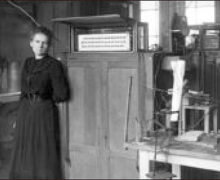
Gordon Moore
Gordon Moore
En su casa de Hawái, el 24 de marzo de 2023 murió Gordon Moore.
¿Quién era Moore?, pues ni más ni menos que el cofundador de Intel junto a Robert Noyce, en julio de 1965, cuando nadie imaginaba la llegada de la revolución tecnológica.
Hasta la fecha Gordon y Betty Moore han donado más de $5,100 millones a causas benéficas.
Gordon Moore fue quien inspiró a tecnólogos y empresarios a lo largo de las décadas, definiendo la industria de la tecnología a través de su perspicacia y visión.
Es imposible imaginar el mundo sin Gordon, ya que fue un científico brillante y uno de los principales empresarios y líderes empresariales de Estados Unidos
Moore e Intel
Moore estableció su empresa en Silicon Valley, siendo una de las primeras empresas en 1965, En ese año Moore predijo que la cantidad de transistores en un circuito integrado se duplicaría cada año, creando la famosa Ley de Moore, corroborada en 1975.
Gracias a Moore la tecnología de chips fue creciendo en forma exponencial, logrando equipo más rápidos y baratos.
Gordon Moore recibió la Medalla Nacional de Tecnología de manos del presidente George HW Bush en 1990 y la Medalla Presidencial de la Libertad, del presidente George W. Bush en 2002.
Durante los 58 años que pasó desde la fundación de Intel, Gordon Moore A2
nunca ejerció el poder de su posición sino el poder del conocimiento, inclusive con los inversionistas,
Intel Corporation
Intel es la primera compañía de microprocesadores del mundo, aunque comenzó a fabricar memorias antes de dar el salto a los microprocesadores, logrando ser lideres por sus memorias DRAM, SRAM y ROM.
El 15 de Noviembre de 1971 lanzaron su primer microprocesador, el Intel 4004, que facilito el diseño de las primeras calculadoras de bolsillo.
El 1 de Abril de 1972, Intel anunciaba una versión mejorada de su procesador el 8008, con más memoria y procesar 8 bits, con velocidad de 740KHz.
En Abril del 1974 lanzaron el Intel 8080X, con 2 Mhz de velocidad y memoria de 16 bits.
En 1975 Intel anunciaba el primer ordenador personal, de nombre Altair, con un procesador 10 veces más rendidor y una memoria de 64kb.
En 1978 firman un contrato con IBM PC, que adopta los microprocesadores 8086 y 8088X, vendiendo millones de unidades, gracias a esto Intel fue nombrada por “Fortune” como uno de los mejores negocios de los años setenta.
El 1 de Febrero de 1982, Intel lanza el 80286 (el famoso “286”) con una velocidad de 25 Mhz y memoria virtual, que en el caso del 286 podía llegar hasta 1 Giga.
Ese año aparece un nuevo competidor de IBM, Compaq que firma contrato con Intel en 1985 lanzando al mercado sus nuevas computadoras.
En 1986 Intel lanza el 80386 conocido como 386 y el 10 de abril de 1989 apareciera el Intel 80486DX, (486)
El 27 de Marzo de 1995, lanzan Pentium Pro para los servidores de red y las estaciones de trabajo con 200 MHz de velocidad.
El 6 de junio de 2005 Intel acuerda con Apple Corp, para proveer los nuevos procesadores.
En enero de 2006 lanzan las primeras computadoras de Apple, una portátil y otra de escritorio, con procesadores Intel Core Duo de doble núcleo.
Dentro de los microprocesadores de Intel podemos destacar las tecnologías de Pentium D y Core 2 Duo, como la tecnología móvil Centrino para ordenadores portátiles y Hyper Threading integrada en los procesadores Intel Pentium 4.
Como vemos el sueño que tenía Gordon Moore se cumplió con creces.
Gordon Moore died at his home in Hawaii on March 24, 2023.
Who was Moore? Well, neither more nor less than the co-founder of Intel together with Robert Noyce, in July 1965, when nobody imagined the arrival of the technological revolution.
To date Gordon and Betty Moore have donated more than $5.1 billion to charitable causes.
It was Gordon Moore who inspired technologists and entrepreneurs over the decades, defining the technology industry through his insight and vision.
It is impossible to imagine the world without Gordon, as he was a brilliant scientist and one of America’s leading entrepreneurs and business leaders.
Moore and Intel
Moore established his company in Silicon Valley, being one of the first companies in 1965. In that year Moore predicted that the number of transistors in an integrated circuit would double every year, creating the famous Moore’s Law, corroborated in 1975.
Thanks to Moore, chip technology grew exponentially, achieving faster and cheaper equipment.
Gordon Moore received the National Medal of Technology from President George HW Bush in 1990 and the Presidential Medal of Freedom from President George W. Bush in 2002.
During the 58 years since the founding of Intel, Gordon Moore never exercised the power of his position but the power of knowledge, including with investors,
Intel corporation
Intel is the first microprocessor company in the world, although it began manufacturing memories before making the leap to microprocessors, managing to be leaders for its DRAM, SRAM and ROM memories.
On November 15, 1971, they launched their first microprocessor, the Intel 4004, which facilitated the design of the first pocket calculators.
On April 1, 1972, Intel announced an improved version of its 8008 processor, with more memory and 8-bit processing, with a speed of 740KHz.
In April 1974 they launched the Intel 8080X, with 2 Mhz speed and 16-bit memory.
In 1975 Intel announced the first personal computer, named Altair, with a processor 10 times more efficient and 64kb of memory.
In 1978 they signed a contract with IBM PC, which adopted the 8086 and 8088X microprocessors, selling millions of units, thanks to which Intel was named by “Fortune” as one of the best businesses of the seventies.
On February 1, 1982, Intel launches the 80286 (the famous “286”) with a speed of 25 Mhz and virtual memory, which in the case of the 286 could reach up to 1 Gig.
That year a new competitor to IBM appears, Compaq, which signs a contract with Intel in 1985, launching its new computers on the market.
In 1986 Intel launches the 80386 known as 386 and on April 10, 1989 the Intel 80486DX appeared, (486)
On March 27, 1995, they released Pentium Pro for network servers and workstations with 200 MHz speed.
On June 6, 2005 Intel agreed with Apple Corp, to provide the new processors.
In January 2006, they launched the first Apple computers, one laptop and one desktop, with dual-core Intel Core Duo processors.
Within Intel microprocessors we can highlight Pentium D and Core 2 Duo technologies, such as Centrino mobile technology for laptops and Hyper Threading integrated into Intel Pentium 4 processors.
As we can see, Gordon Moore’s dream came true.
























